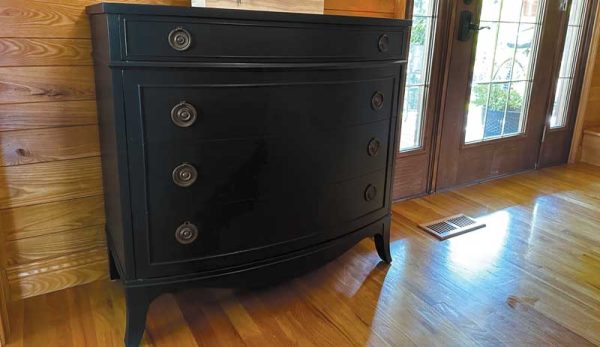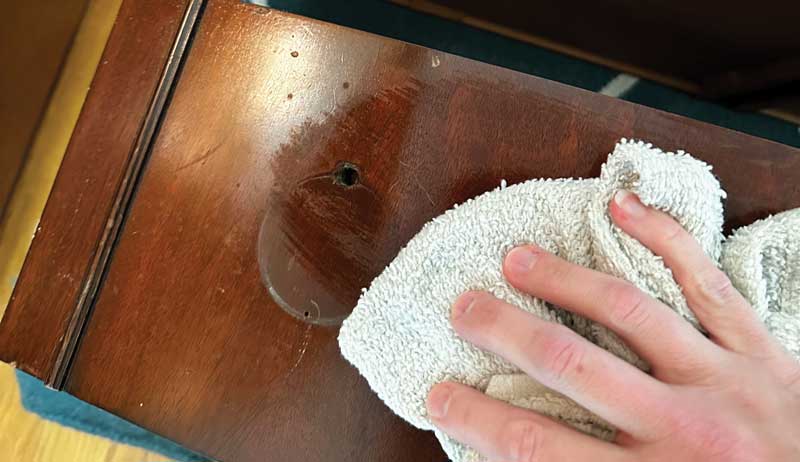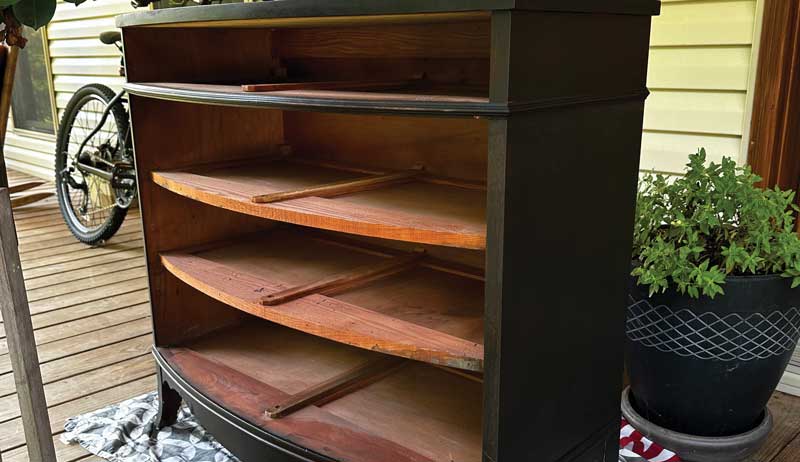
Being rural, especially when your farm is remote, can make access to just about anything challenging. Recipe calls for exotic ingredients? Search the Internet for a more accessible substitution. Need an appliance part ASAP? Order online and wait for it to ship. Need a certain color dresser for your bedroom refresh? You could order online, or you could refinish something that you already own or picked up secondhand.
Some furniture pieces are easy to identify for a paint refresh, but others—such as antiques and vintage pieces—can be a little daunting and might even come with a degree of heat from your peers.
Honestly, any furniture you choose to paint is just that: your choice. No one else’s opinion really matters, but I know that mind doesn’t always manage to trump matter, especially when that matter involves family and friends. So, to secure your peace of mind and help quiet the naysayers, you should consider a few factors before wielding a paint brush: age, condition, value and material.
Age
Start by determining the age of the furniture piece you have in mind. According to Deidre Mundorf at Bob Vila, items that are 100 years or older fall into the antique category, items that are more than 300 years old are antiquities or artifacts, and vintage items fall between the ages of 20 to 99 years. The sneakiest label is that of “retro,” which includes newer items made to mimic older ones.

Finding the age can be as simple as looking on the back, underside or in the drawers for the stamped date or a label. You can also search brands and patent numbers online.
Condition
Next, evaluate the condition of the piece. Is there damage and to what degree? Faded, cracked and even chipped paint is minor. The more damage, the less desirable a piece will be.
For instance, my dog chewed so far into the leg of my antique dresser that I worried the stability might be compromised. It also had suffered water damage prior to purchase and has countless dings and scratches. All in all, it had a lot of damage.
Value
The age and condition of your furniture will have a huge impact on its market value. Unless you know a professional in the antiques or vintage market, your best options for determining the current value are to search comparable pieces online or to get an appraisal.
For my Drexel dresser, I found a company who offers 24- and 48-hour turnarounds on appraisals. I uploaded several pictures of the dresser, including labels, serial numbers, an overall shot and close-ups of the damage. Two days later, I got my response: $50 to $60.
Material
For the sake of space in this article (and mental capacity in my brain), I’m focusing on painting wood furniture. Know now, there are purists out there who believe no wood should ever be painted. I’m not one of them, but I do believe in taking a measured approach.
I prefer not to paint items that are solid wood unless the condition and/or cost to get it back to stain grade is prohibitive.
Exotic or expensive hardwoods are considered stain-grade for a reason, but condition may overrule this guideline. An inexpensive, soft wood such as pine that is a recent production (channel your inner IKEA hacks here) is an excellent candidate for paint in my humble opinion. Plus, wood can absorb smells, which can be difficult to eliminate without resorting to a paint or sealant to lock in odors.
Painting Your Old Furniture
Well, you’ve made it this far, so painting your furniture isn’t out of the question. Don’t run off to the paint store just yet. Consider what type of paint will work best for your project:
Oil-Based
Wood is a porous surface and can easily absorb oils, which can damage its fibers. Avoid using oil-based paints on wood. These are better served for metal refinishing. However, if you’re painting over another paint and aren’t sure if it’s oil- or water-based, you might consider using oil-based for your project.
Water-based paints won’t adhere well to oil-based, whereas, oil-based will adhere to both types. Be sure to paint in an open-air space for maximum ventilation. These paints have high volatile organic compounds that aren’t good to breathe.
Water-Based
Water-based paints are often easier to come by, have lower VOCs (and therefore odors), and are easier to work with and clean up. The finish isn’t quite as durable as an oil-based, but the ease of use and access often win out.
There are plenty of water-based paints with an even greater variety of finishes. Here are four of the most common types used for furniture:
- latex paint
- chalky paint
- milk paint
- acrylic paint
Let’s Get To Work
Here’s how to paint wood furniture.
Prep
Take drawers out and doors off, then remove hardware. The last thing you want to do is inadvertently paint the drawers and/or doors shut. Wipe away any sticky or gummy residues with a degreaser. The residue could affect the adhesion of fillers and trying to sand them would only make a bigger mess.

Use wood filler to patch deep gouges and other major damage, applying the filler in layers, sanding in between, and following the product instructions for dry time.
Once you achieve smooth coverage, lightly sand the whole piece. Be careful not to go too deep with the sanding. We just want to rough up the surface.
“Start with 80- to 100-grit sandpaper, switch to 150-grit or higher sandpaper to remove any remaining finish, and then smooth out the surface,” says Rachel Brougham at Bob Vila.
Paint
Wipe the surface with tack cloth or a damp rag—don’t use paper towels or rags that shed to avoid further debris. Apply a thin layer of primer or paint/primer all in one. Let dry fully.

Check paint label for dry times, and add extra for high humidity environments.
Sand (optional)
This step will help give you the smoothest final finish. Lightly sand the paint, wipe the surface to remove dust and apply another thin coat of paint and let dry fully. Repeat this step until desired coverage is achieved.

I did three coats on the frame and drawers and four coats on the top.
Seal (optional)
If this piece will endure heavy use or be outside, consider adding a protective finish.
“If you are painting a piece of furniture that will not be heavily used, you may be able to skip the sealer,” says Carrie Spalding at Lovely Etc., a popular DIY website. “If you do, be sure to be extra gentle with your furniture for the first month of use. Even though the paint may feel dry to the touch, it can take up to 30 days for it to fully harden.
Be sure to select the finish based on your needs and the paint you used. (Note: Some topcoats can yellow the finish. Be sure to select a nonyellowing sealant.) Let the topcoat cure for the recommended time before moving.
Finish
Put on hardware and reassemble. Place your furniture, decorate and enjoy!
Painting a piece of furniture, regardless of its age, all comes down to personal preference. If you aren’t looking to grow a piece’s historic value or if you think refinishing/painting it could potentially increase its value (even if it’s just in your eyes), then I say go for it. You’re ultimately the client in this situation, and your happiness is what matters most.
More Information
Resources
There are plenty of opinions out there when it comes to painting furniture pieces. Here are a few that helped me.
Appraisals
Choosing a Topcoat
Defining and Determining Antique vs. Vintage
Dos and Don’ts of Painting
- Bob Villa
Painting Antiques and Vintage Pieces
Types of Paint
This article appeared in Hobby Farm Home, a 2024 specialty publication produced by the editors and writers of Hobby Farms magazine. In addition to this piece, Hobby Farm Home includes recipes, crafting projects, preservation tips and more. You can purchase this volume, Hobby Farms back issues as well as special editions such as Healing Herbs and Goats 101 by following this link.




